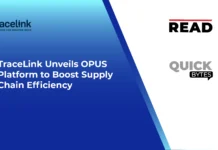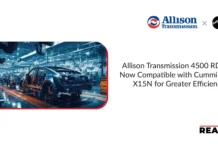Schneider Electric and Pacific Gas and Electric Company (PG&E) announced the deployment of a distributed energy resource management system (DERMS) on Microsoft Azure to more effectively maintain grid reliability, and accelerate customer adoption of distributed energy resources (DER) such as electric vehicles, energy storage and rooftop solar.
Maintaining reliable energy service has grown more challenging as the country navigates extreme weather and heavier demand for electricity. The exponential growth of DER promises much-needed load flexibility as more renewables come online. DERMS provides the ability to harness that flexibility when and where it’s needed.
The DERMS technology provides greater visibility into DER behavior and the ability to control DER intelligently. Greater situational awareness allows for more proactive management to keep the grid safe, secure and resilient, while helping utilities provide clean, reliable and affordable energy to their customers.
EcoStruxure™ DERMS is a cloud-based, grid-aware software platform, which runs on Microsoft Azure, that integrates, analyzes, and optimizes data from DER—like solar, electric vehicles, battery energy storage, and microgrids. That data then provides electric grid operators with enhanced communication and coordination capabilities to unlock the value of DER as flexible grid resources.
“PG&E is partnering with the best and the brightest to deliver breakthrough solutions for our customers. Having efficient and reliable renewable energy resources integrated into the grid, with a powerful DERMS controlling and synchronizing them means that we can continue to grow the share of renewables in the grid while maintaining safe and reliable power,” said Patti Poppe, Chief Executive Officer, PG&E Corporation. “It’s a customer-focused energy solution that will bolster reliability and affordability on the path to a clean energy future.”
PG&E serves more than 16 million people across Northern and Central California, where its customers are often early adopters of new, clean energy technologies. PG&E is taking proactive measures to ensure grid reliability and meet the growing electricity demands of California.
- PG&E has connected more than 700,000 customers with rooftop solar to the electric grid, and more than 55,000 PG&E residential, business and government customers have installed battery energy storage systems connecting to the grid across PG&E’s service area, totaling more than 500 megawatts (MW) of capacity.
- Over the past few years, PG&E has made significant progress deploying grid-scale battery energy storage. In August of 2020, PG&E had just 6.5 megawatts (MW) of battery energy storage connected to the power grid. Today, PG&E has 1,200 MW of storage capacity operation, and by September this year, it expects to have 1,700 MW online, or enough to meet the instantaneous demand of 1.2 million homes at once. PG&E has contracts for battery energy storage systems totaling more than 3,000 MW to be deployed over the next few years.
- As outlined in its Climate Strategy Report, PG&E is preparing the grid to power and support three million EVs on the road in its service area by 2030, with goals of more than two million of them participating in vehicle-grid-integration initiatives, allowing EVs to be a cornerstone of both electric reliability and climate resilience.
- PG&E’s Vehicle to Everything (V2X) pilots offer incentives to help customers access new bidirectional charger technology to use their car battery to power their home and send stored power back to the grid on high demand days.
DERMs will enable the dispatch of these technologies when California needs energy most.
The advantages that EcoStruxure DERMS provides through the advanced management of DER directly supports PG&E’s plans for meeting and exceeding California’s climate and clean energy goals, while supporting an affordable transition to a highly electrified, renewable grid.
A Unified Team for Improved Grid Management
The collaboration among Microsoft, PG&E, and Schneider Electric to develop and launch a DERMS strategy symbolizes the power of a unified team with diverse talents and expertise working collaboratively to achieve a new utility-industry standard for integrating DER at scale.
Annette Clayton, Chief Executive Officer of Schneider Electric North America, lauded PG&E‘s comprehensive, cloud-enabled DERMS strategy as an example of Schneider Electric’s Grid to Prosumer philosophy. “This methodology empowers utility companies to digitally transform to achieve their sustainability, efficiency, reliability, and flexibility goals. This approach to optimize distributed energy resources is agile enough to keep up with 21st century demands on the grid. A stepwise approach is key in DER implementation to effectively handle short-term goals and prepare for the long-term vision.”
SOURCE: PRNewswire




